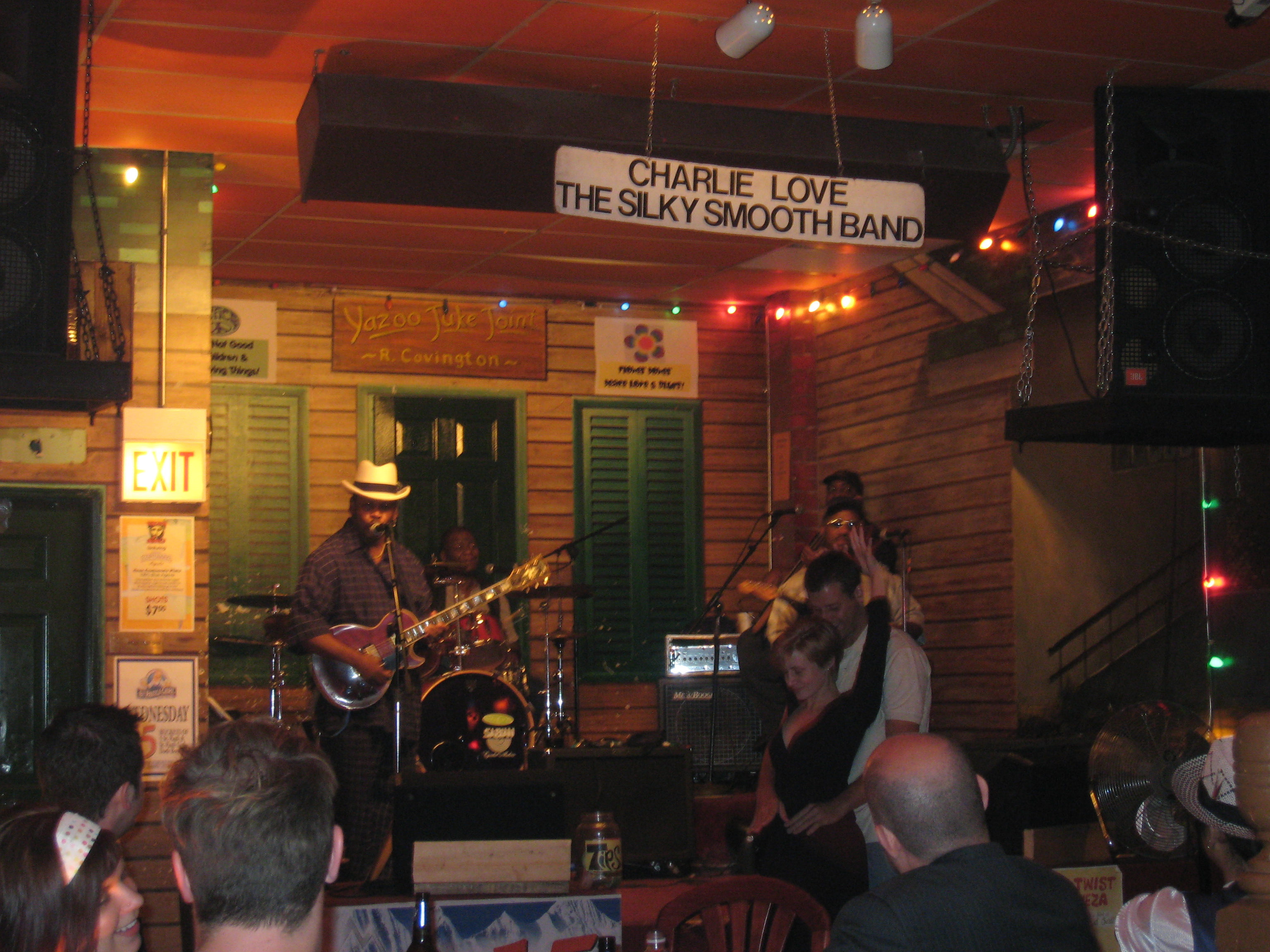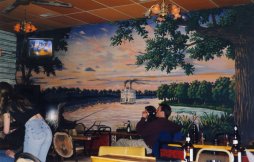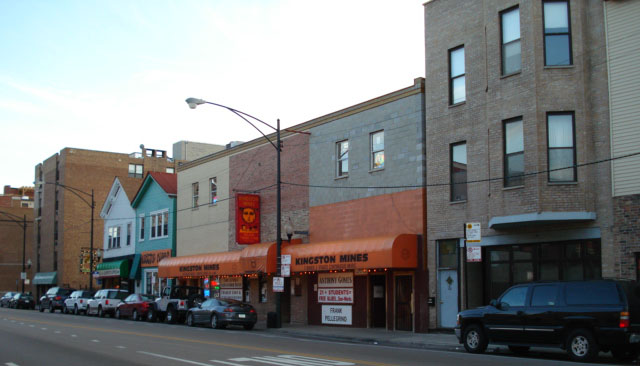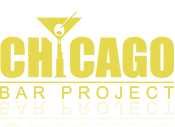 Photo courtesy of Yo! ChicagoNot to be confused with the tiny, downstate Illinois mining town of the same name, Kingston Mines is one of Chicago’s oldest, largest and most infamous blues joints. Self-described as the “Chicago Blues Emporium,” Kingston Mines began as a coffeehouse featuring more plays than blues, but quickly adopted an all Chicago-style blues format as the popularity of the musical genre increased and because many would rather hear blues in Lincoln Park than on the rougher South Side – though some take issue with the authenticity of Kingston Mines. Regardless, the Mines attracts locals, tourists, blues legends, and celebrities alike who come for the blues that is played continuously, alternating between two stages, deep into the heart of the night (4/5am).
Photo courtesy of Yo! ChicagoNot to be confused with the tiny, downstate Illinois mining town of the same name, Kingston Mines is one of Chicago’s oldest, largest and most infamous blues joints. Self-described as the “Chicago Blues Emporium,” Kingston Mines began as a coffeehouse featuring more plays than blues, but quickly adopted an all Chicago-style blues format as the popularity of the musical genre increased and because many would rather hear blues in Lincoln Park than on the rougher South Side – though some take issue with the authenticity of Kingston Mines. Regardless, the Mines attracts locals, tourists, blues legends, and celebrities alike who come for the blues that is played continuously, alternating between two stages, deep into the heart of the night (4/5am).
Kingston Mines is located just south of Wrightwood Avenue on Halsted, almost directly across from B.L.U.E.S. and forms the west side of “Blues Alley.” “Chicago Blues Center” is written on orange awnings illuminated at night that spans three buildings, whose varying colors of the upper floors appears like an unintended mosaic. If you haven’t purchased tickets ahead of time, step up to the ticket window that looks like a bullet-proof portal and have your cash or credit card ready: cover is currently $12 Sunday through Wednesday, $15 in advance/$20 at the door Thursday through Sunday, and $7-$10 with a student or military ID. Your receipt will be pushed under the glass for presentation to the bouncers, who are huge and not to be messed with.
As you enter Kingston Mines, you’ll find concert bills lining the walls in a small entranceway that opens up into the largest space at Kingston Mines. An elevated stage along the east wall hosts the main act, with a backdrop that looks like the front porch of a shanty somewhere in the Mississippi Delta. A bar, with neon beer signs in the shape of guitars above it, wraps around the northwest corner of the room that primarily serves bottled domestic beer, sometimes on special on served in buckets. A mural of a cotton field lines the south wall and sketches of blues legends that have played the Kingston Mines hang along the north wall of the hallway leading to the rear. Seating is available at long, narrow wooden tables with railings to hold in patrons. An orange glow is cast over the space thanks to a drop ceiling with orange panels and old-fashioned light fixtures with orange lightbulbs. An aisle in front of the bar serves as a walkway to the ceramic-tiled bathrooms and, if the show is going strong in the next room, the back entrance to the main room. This back area also features an ATM, the entrance to the musicians’ lounge, and the entrance to the kitchen, known as Doc’s Rib Joint.
 Photo courtesy of MathieuThe Kingston Mines via Doc’s features a Southern menu of New Orleans-style ribs, rib tips, wings, catfish, and chicken (strangely, no fried chicken), all of which is cooked up on a charcoal gas grill. Waitress service throughout Kingston Mines only works your drink orders, so food is ordered through the kitchen window in the back and a few cocktail tables that presumably serve as the best place to wait the 10-15 minutes for your pick up to be ready or to tuck into your meal in the main room, though I’ve never eaten there and have never seen anyone sitting back there. Most describe the food as decent, not too expensive and accompanied by the ever-delectable tater tots. Speaking of the waitresses, they work the room exceptionally well so that you won’t get the blues waiting for your social lubricant, although they might take a break… to sing with the band!
Photo courtesy of MathieuThe Kingston Mines via Doc’s features a Southern menu of New Orleans-style ribs, rib tips, wings, catfish, and chicken (strangely, no fried chicken), all of which is cooked up on a charcoal gas grill. Waitress service throughout Kingston Mines only works your drink orders, so food is ordered through the kitchen window in the back and a few cocktail tables that presumably serve as the best place to wait the 10-15 minutes for your pick up to be ready or to tuck into your meal in the main room, though I’ve never eaten there and have never seen anyone sitting back there. Most describe the food as decent, not too expensive and accompanied by the ever-delectable tater tots. Speaking of the waitresses, they work the room exceptionally well so that you won’t get the blues waiting for your social lubricant, although they might take a break… to sing with the band!
The main room is frequently packed by the time you arrive, especially if the band is playing, so I recommend that you quickly duck into the side room to your right, where it will be immensely easier to find a table and you won’t have to worry about the jostle and press of the crowd or being shooed out of the aisles by the waitstaff. This second room features a slightly smaller stage with the same Mississippi porch motif and a large flatscreen TV hanging to the left of the stage displaying the band playing on the main stage. A mural of a New Orleans street scene is painted upon the north wall and a drop ceiling holds alternating white and orange panels. In front of the stage is the first seating section that has tables suitable for enjoying a platter of ribs and there’s just enough space for people to dance and twirl while the band plays on. A wooden ramp leads up to the second, elevated section where instead of “tables” you sit in a wooden pew (or banquet hall chair) and have a foot-wide place that is only meant to hold drinks. A second bar runs along south end of this room.
“‘With urban blues you’ll hear performers sing about jobs in factories, jobs in mills, rental problems, unemployment and prejudice. It’s a big city blues.’ The other side of this binary come from humbler settings: ‘With rural blues, things are more about farming, driving a mule, problems with the bossman, the small town existence.’ The intermingling of the two is what makes Chicago distinctive. ‘Rural blues with a large overlay of urban blues still hanging on. This is Chicago blues.'”
– excerpt from “Kingston Mines: ‘Doc’ Pellegrino Can Still Hear the Blues” by Jacob Knabb on Centerstage Chicago (June 7, 2005)
 The first band begins at 9:30pm in the main room and there are a total of six sets during the night, playing up until 3:30am. What’s so interesting about Kingston Mines is that the club predominantly features local bands, some of whom are only known in Chicago and some of whom are internationally renowned. Such performers include: Magic Slim, Duke Tomato, Larry McCray, Eddy Clearwater, A.C. Reed, Jimmy Johnson, Eddie C. Campbell, Billy Branch, Linsey Alexander, John Primer, Les Getrex, Joanna Connor, Vance Kelly, Jimmy Burns, Hoochie Man, Charlie Love, Carlos Johnson, Kid Dynamite, Duke Tumatoe, and Big James. Because of its level of talent, Kingston Mines has also attracted such visitors as Mick Jagger, Bob Dylan, David Bowie, Robert Plant, and Stevie Ray Vaughan (allegedly the night before his plane went down), as well as celebrities like the Blues Brothers in 1980 to promote the film, John Candy, Vince Vaughan, Patrick Swayze, Harrison Ford, and Nicholas Cage. Eric Clapton is rumored to visit when he’s in town, wearing a disguise. The everyday crowd at Kingston Mines consists of all types: locals, tourists, black, white, young, old, good-looking, fugly, normal, cracked – anyone and everyone, even the original Bad, Bad Leroy Brown. From what I have witnessed, the only dress code is that you actually wear clothes. I was there one night with people I work with, who included a 6’7″ general manager from Texas that spoke of having a couple of beers and cleaning his shotgun as boys came to his house to take out his daughter; an even taller, bespectacled Nigerian who shaves his head but left his sideburns in tact, is married to a 5’2″ Irish woman, and who drinks White Russians; a half Swedish, half-German with an English accent; and a boisterous American blonde with her Korean boyfriend. To stir things up, the musicians frequently walk into the audience with wireless guitars, simultaneously dancing with the ladies and hocking CDs. I once saw J. W. Williams and the Chi-Town Hustlers, led by a 5’0″ black dude dressed in a red suit and hat singing about “Sue”: a girl that once tied him to a chair, took off his shoes and the rest is “none of your damned business.”
The first band begins at 9:30pm in the main room and there are a total of six sets during the night, playing up until 3:30am. What’s so interesting about Kingston Mines is that the club predominantly features local bands, some of whom are only known in Chicago and some of whom are internationally renowned. Such performers include: Magic Slim, Duke Tomato, Larry McCray, Eddy Clearwater, A.C. Reed, Jimmy Johnson, Eddie C. Campbell, Billy Branch, Linsey Alexander, John Primer, Les Getrex, Joanna Connor, Vance Kelly, Jimmy Burns, Hoochie Man, Charlie Love, Carlos Johnson, Kid Dynamite, Duke Tumatoe, and Big James. Because of its level of talent, Kingston Mines has also attracted such visitors as Mick Jagger, Bob Dylan, David Bowie, Robert Plant, and Stevie Ray Vaughan (allegedly the night before his plane went down), as well as celebrities like the Blues Brothers in 1980 to promote the film, John Candy, Vince Vaughan, Patrick Swayze, Harrison Ford, and Nicholas Cage. Eric Clapton is rumored to visit when he’s in town, wearing a disguise. The everyday crowd at Kingston Mines consists of all types: locals, tourists, black, white, young, old, good-looking, fugly, normal, cracked – anyone and everyone, even the original Bad, Bad Leroy Brown. From what I have witnessed, the only dress code is that you actually wear clothes. I was there one night with people I work with, who included a 6’7″ general manager from Texas that spoke of having a couple of beers and cleaning his shotgun as boys came to his house to take out his daughter; an even taller, bespectacled Nigerian who shaves his head but left his sideburns in tact, is married to a 5’2″ Irish woman, and who drinks White Russians; a half Swedish, half-German with an English accent; and a boisterous American blonde with her Korean boyfriend. To stir things up, the musicians frequently walk into the audience with wireless guitars, simultaneously dancing with the ladies and hocking CDs. I once saw J. W. Williams and the Chi-Town Hustlers, led by a 5’0″ black dude dressed in a red suit and hat singing about “Sue”: a girl that once tied him to a chair, took off his shoes and the rest is “none of your damned business.”
“On weekdays satisfy your craving for MILFs and Cougars.”
– Jacob J. on Yelp (February 7, 2008)
With a name almost as interesting as the Wild Hare, Armadillo and Frog Sanctuary further north, Kingston Mines opened in a former machine shop in 1968 on Lincoln by Lenin “Doc” Pellegrino, a physician by day at the time at the now-defunct Walther Memorial Hospital. The initial format was more of a coffeehouse that featured more plays than blues. “In fact, in 1971 the original version of Grease premiered at Kingston Mines. Titled Grease Lightening, the musical about high school life in the 1950s was the creation of Chicago writers Jim Jacobs and Warren Casey. Within a year, the play was revised, retitled Grease, and moved to Broadway, where it became an instant hit,” according to Karen Hanson in her book, Today’s Chicago Blues (2007). Over the years, what originally started as more of the Delta Blues variety (country blues), morphed into the Chicago blues style to reflect its urban surroundings and the “Chicago Blues Center” was born. In 1980, the roof caved in (literally) and Kingston Mines moved to 604 N. Clark in River North. The original building was later torn down and is where Children’s Memorial Hospital now stands. When the landlord almost doubled the rent, Kingston Mines moved to its current location in 1982, replacing a jazz club named Redford’s. The second Kingston Mines location was also torn down and is now where the Rock ‘n Roll McDonald’s currently stands. Today, the Kingston Mines is going as strong as ever, and Doc has retired from medicine and frequently emcees the shows at his club.
“This place rocks. Sure it’s a little touristy, and there’s always some frat boy doing something stupid, and some middle aged mom out for the night getting freaky on the dance floor, but that’s part of the show.”
– Andy T. on Yelp (January 24, 2008)
Kingston Mines is gritty for some, Blues Heaven for others. Either way, the joint has become a Chicago legend with the level of blues talent that it has attracted for over 40 years. And instead of being a hardcore competitor to B.L.U.E.S. across the street, both clubs have teamed up to offer “Blues Alley Sunday” when you pay one cover to see up to three bands at both clubs. Doc Pellegrino should be very proud of the institution that created out of his love for the blues and equal rights – he even marched with Dr. Martin Luther King, Jr. If you like Kingston Mines, be sure to check out Rosa’s Lounge (Logan Square), Blue Chicago (River North), and Lee’s Unleaded Blues (Grand Crossing, be sure to drive). For more information and a calendar of upcoming shows, check out the Kingston Mines website. Sweet home Chicago!





